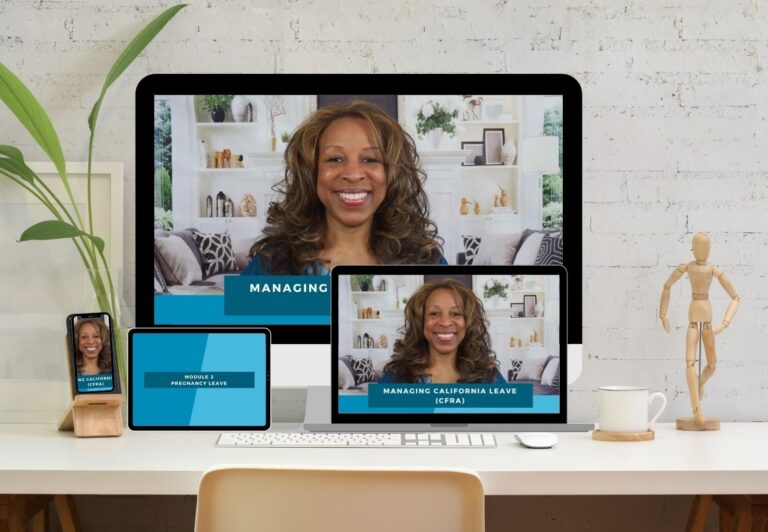How to Create a Great Experience for New Hires

By VICKY BROWN
I know you know the importance of having a good start up process for your new hires. After all, that’s their first impression, your best foot – and you’re putting it forward. Seriously, your new team member is carefully watching those first few actions, and monitoring how they feel in this new environment.
So, I this episode we’re going to dive into some important tips that can help you make the most of that first impression.
First, be prepared. Don’t let your new hire just walk in, say hi, and you’re caught completely unaware. Prepare for their first day. Get the logistics nailed, have a cleared space, a desk, a chair (don’t get me started), a PC or laptop – make sure they have access to all the programs and applications necessary to do the job. Have the logins, and email set up; make sure they have a phone and extension, and that they know what it is, and how to use it (the phone that is). Are there pens and pencils on the desk, how about tape and a stapler. Well, you get the idea – make sure they are set up to get right to it.
Next, on to the first day and beyond. Successful orientations aren’t a one and done affair. First, your new hire will absolutely have no chance of internalizing all the information that is being thrown at them. And the information – well it’s a lot, too much in fact – too much for 1 day , or even 2. Spread things out, give the process a little breathing room. Think of the onboarding process in phases.
One phase will be you giving information or training, then they have a phase of actually doing some work, then another phase of training, then more working and on and on. For a bit – actually I think at least 6 mos. Now, of course as we get farther and farther out, the phases get farther apart with less training and more working. But definitely think of the process as an arc.
The first part of the arc is onboarding and orientation. Completing new hire documents, the tour, the orientation process. And I suggest you take all the items that would be in that orientation, the tech you use, what the company hours are, the various departments and what they do, a bit of company history and timeline, security procedures, how to get office supplies, the meeting cadence, company goals – all those day to day pieces of information that can easily make or break the user experience. Well, I suggest you pull them altogether and put them in a class, or some sort of online accessible platform.
“…Knowing not only what you’re expected to do, but where your job fits in the overall picture, can really help someone new understand how and why their contribution is so important.“
This has a number of benefits – you can be sure all new hires are hearing the same thing in the same way; they can take the information in at their own pace; and it will always be there as a resource they can reference.
Now, it can’t all be faceless – it’s important that new team members hear directly from company leadership (a warm welcome goes a long way, and makes sure you are seen as approachable); and it’s helpful if they can hear from other leaders in the company as well, other department heads or team leads. Knowing not only what you’re expected to do, but where your job fits in the overall picture, can really help someone new understand how and why their contribution is so important.
Now, I’ve talked a lot about the first part of the first day. But what about actually doing the job? How will they effectively learn. Well, you know the standard process is for the new person to shadow someone who is doing the job. Or maybe their manager will walk them through each process as it comes up (certainly not the best way to give a clear training path.). But either way – the people closest to the job will have some responsibility for bring the new person up to speed. So, how can you make this easy and effective for everybody involved? One simple thought.
Create a timeline and training goals. Actually, truth be told, you should give the new hire a timeline and set of learning goals for the whole onboarding process. But at the very least, you have to have these things for the departmental training. It’s really the only way you can be sure you’ll get everything covered, without going astray.

So, one of your employees just told you that she’s pregnant. Feeling overwhelmed, with no idea where to start? After all, HR just got dumped on your plate. It’s not your zone of genius, and you don’t want it to be.
Managing California Leave is your answer. It’s an easy to understand course, that explains what the various leave programs are – without the HR gobbledy gook. And it gives you a clear step by step guide that walks you through the process of putting someone on leave
Yep, you get all the forms, notices and documents too. Everything you need to do it right and do it fast. After all, you don’t have all day – you have other things to do!
And it’s all part of the Leaders Journey Experience learning paths. Use the link to explore all LJE has to offer. And don’t worry – you’ve got this. And we’ve got you.
I know how it is – you’re training on one thing, then an issue comes up, or a client calls in with a problem, and then you go down the rabbit hole of training on how to address that issue; without even realizing you have completely abandoned your original training track, and just left the new hire hanging.
You start each day with the best of intentions, but it just keeps happening, and pretty soon they’re doing what they’ve learned, you are swamped so you’ve moved on to other things…and the training process never quite gets finished – so there’s a gap. And it doesn’t show up until it does, and you’re left wondering whey they didn’t know that thing, because it’s so basic. Well, they didn’t know it because you never got around to training them on it – it was in the gap.
So do yourself a favor, develop a timeline, training goals, and track both during the training process.
Oh, and earlier I said onboarding was more than one and done – well, after a few weeks, pull all the new hires together and have a lunch and learn. They can talk about their first few weeks, continue to build relationships with one another, and maybe even give feedback on the process so far.
And do something every few weeks for the first 6 months – it’s a nice check in to see how everyone is doing, and you’d be surprised by the amount of really valuable feedback you’ll get.
Spread the word
MORE HUMAN, MORE RESOURCES
310.308.7680 option 1
hello@idomeneoinc.com

